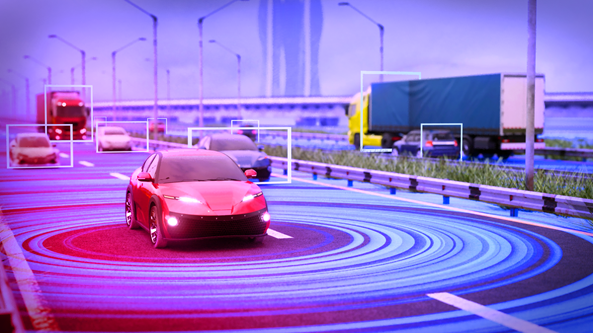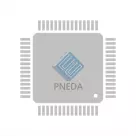Building safe self-driving cars

The automotive industry is undergoing a transformation, with the rise of electric vehicles and the increasing automation of autonomous vehicles (AVs). In China, many companies have devoted themselves to the research and development of fully autonomous vehicles, and a series of pilot projects have been launched to achieve this goal as soon as possible. A science park in Hong Kong is launching an AV trial to study how commuters can be connected to a public transport system in a smart city environment. Chinese consumers are more willing than their Western counterparts to embrace autonomous driving and are more enthusiastic about various autonomous driving features.
A large part of the appeal of autonomous vehicles is their potential to reduce traffic stress, reduce the number of accidents and injuries, and enable a safer driving experience. Until Level L5 is achieved, it is critical to foster trust in autonomous driving. But it is also a complex issue that leaves no room for error. Adding to the challenge, the ecosystem involved in building and developing AV is more complex and fragmented than the existing automotive industry.
Until industry and society can address safety issues and build trust internally, fully autonomous driving will remain a long way off. Some of the factors that affect progress include:
1. Overcome data and security challenges
Today's cars are equipped with an array of sensors and on-board networks that collect a variety of data designed to increase predictability. Digital twin solutions measure vehicle performance in real-world scenarios through simulations - they establish a realistic environment where AVs can make accurate, predictable and safe decisions in real time. However, to achieve fully autonomous driving, the industry must work together to create a shared data framework that enables more intelligent modeling to help solve the complex safety issues involved in driverless cars.
As the variety of software installed in cars continues to increase, the number of opportunities for hackers will also increase. For AVs, once they are hacked, they can lose financial data or personal data, or even endanger their lives. Therefore, manufacturers need to ensure that every possible vulnerability is discovered and eliminated during the design phase, and every effort is made to create a safe and reliable autonomous driving experience. In addition, once the car is on the road, all software or system updates must be rigorously tested to ensure that no safety defects are left behind.
2. Meet regulatory requirements
Regulators have a pivotal influence in pushing AV to upgrade the level of autonomous driving and gain market acceptance.
Most accidents are caused by human error, and AV legislation could help usher in a new era of safer driving. To build trust, the entire ecosystem and supply chain must adhere to these laws and regulations. The development of autonomous vehicles will not only require the cooperation of the industry, but also depend on the implementation of various standards - for example, what constitutes a vehicle with basic feasibility and safety?
Numerous industry organizations, including the United Nations World Forum for the Harmonization of Vehicle Regulations, are working intensively to ensure that autonomous driving is regulated by law. China's National Development and Reform Commission (NDRC) and the Ministry of Industry and Information Technology (MIIT) have jointly released a detailed strategy for the development of autonomous vehicles, setting out the goals to be achieved by 2025. As regulation expands, these measures will address security issues one by one and help build trust.
3. Technology: Both the problem and the solution
Complex technologies are both problems and solutions. Software-defined vehicles are one of the key milestones on the road to fully autonomous driving. The automotive technology race has generated massive data streams that companies can use to improve deterministic decision making and aid the development of new vehicles. As intelligent software becomes more prevalent in vehicles and driver assistance systems, they will reduce human error and improve vehicle safety.
However, the industry still needs more technology to test whether AV performance fully meets expectations and meets the necessary safety standards in various situations. The industry needs to evaluate various driving scenarios, from winding mountain roads to crowded city streets, before autonomous driving becomes widespread. This is no small job.
Digital twins also need to be combined with innovative technologies such as artificial intelligence, machine learning, and virtual reality, as simulation is able to evaluate individual components and systems, including hardware and software. This ensures that the car meets safety and quality standards before it enters the final assembly line. Not only does this save money and time, but it is also the only practical way to evaluate each model in every environment and situation the vehicle may encounter.
The future of autonomous driving
Only by clearing all these obstacles can we move more smoothly toward the goal of higher levels of autonomous vehicles. Of course, the ecosystem will not suddenly shift to fully autonomous driving, but will move one step at a time toward its destination.
The risks associated with autonomous vehicles (AVs) require a concerted effort to address. The closer the cooperation, the faster the problem will be solved. Given that there is still a long way to go before the goal of fully autonomous driving is achieved, it is not practical to predict an exact timetable now. As the software technology race continues, by 2030 we should be more certain of a safe autonomous driving future.
Die Produkte, an denen Sie interessiert sein könnten
 |
3105 | PUSHBUTTON BLUE POWER SYMBOL MOM | 4932 More on Order |
 |
473 | SWITCH PUSHBUTTON SPST-NO RED | 6300 More on Order |
 |
1293 | SENSOR HUMID/TEMP 5V I2C 2% MOD | 7740 More on Order |
 |
4019 | US-100 ULTRASONIC DISTANCE SENSO | 8244 More on Order |
 |
4081 | FLAT VIBRATION SWITCH - BREADBOA | 1445 More on Order |
 |
3846 | SENSOR DIGITAL -55C-125C | 7704 More on Order |
 |
675 | PIPING EL WIRE SEWABLE 5M AQUA | 5814 More on Order |
 |
1379 | ADDRESS LED DISCRETE SERIAL RGB | 8082 More on Order |
 |
2573 | DOTSTAR DIGITAL LED STRIP - BLAC | 7074 More on Order |
 |
2036 | ADDRESS LED MATRIX I2C YLW-GRN | 5094 More on Order |
 |
2561 | ADDRESS LED STRIP SERIAL RGB 1M | 7020 More on Order |
 |
2552 | ADDRESS LED STRIP SERIAL RGB 1M | 5580 More on Order |
 |
2612 | ADDRESS LED MATRIX SERIAL RGB | 7056 More on Order |
 |
2242 | ADDRESS LED STRIP SERIAL RGB 1M | 7650 More on Order |
 |
2852 | ADDRESS LED RING SERIAL RGBW | 4446 More on Order |
 |
2343 | ADDRESS LED DISCR SER RGB 10PK | 11520 More on Order |
 |
4166 | FIBER OPTIC LIGHT SOURCE 1W GRN | 7974 More on Order |
 |
3498 | PYBOARD COLOR LCD SKIN WITH RESI | 3526 More on Order |
 |
4041 | DIFFUSED RED INDICATOR LED - 15M | 6216 More on Order |
 |
1484 | 32X32 RGB LED MATRIX PANEL 6MM P | 5346 More on Order |
 |
2278 | 64X32 RGB LED MATRIX - 4MM PITCH | 5400 More on Order |
 |
812 | BLUE 7-SEGMENT CLOCK DISPLAY | 4554 More on Order |
 |
811 | YELLOW 7-SEGMENT CLOCK DISPLAY | 8442 More on Order |
 |
1001 | WHITE 7-SEGMENT CLOCK DISPLAY | 15054 More on Order |









